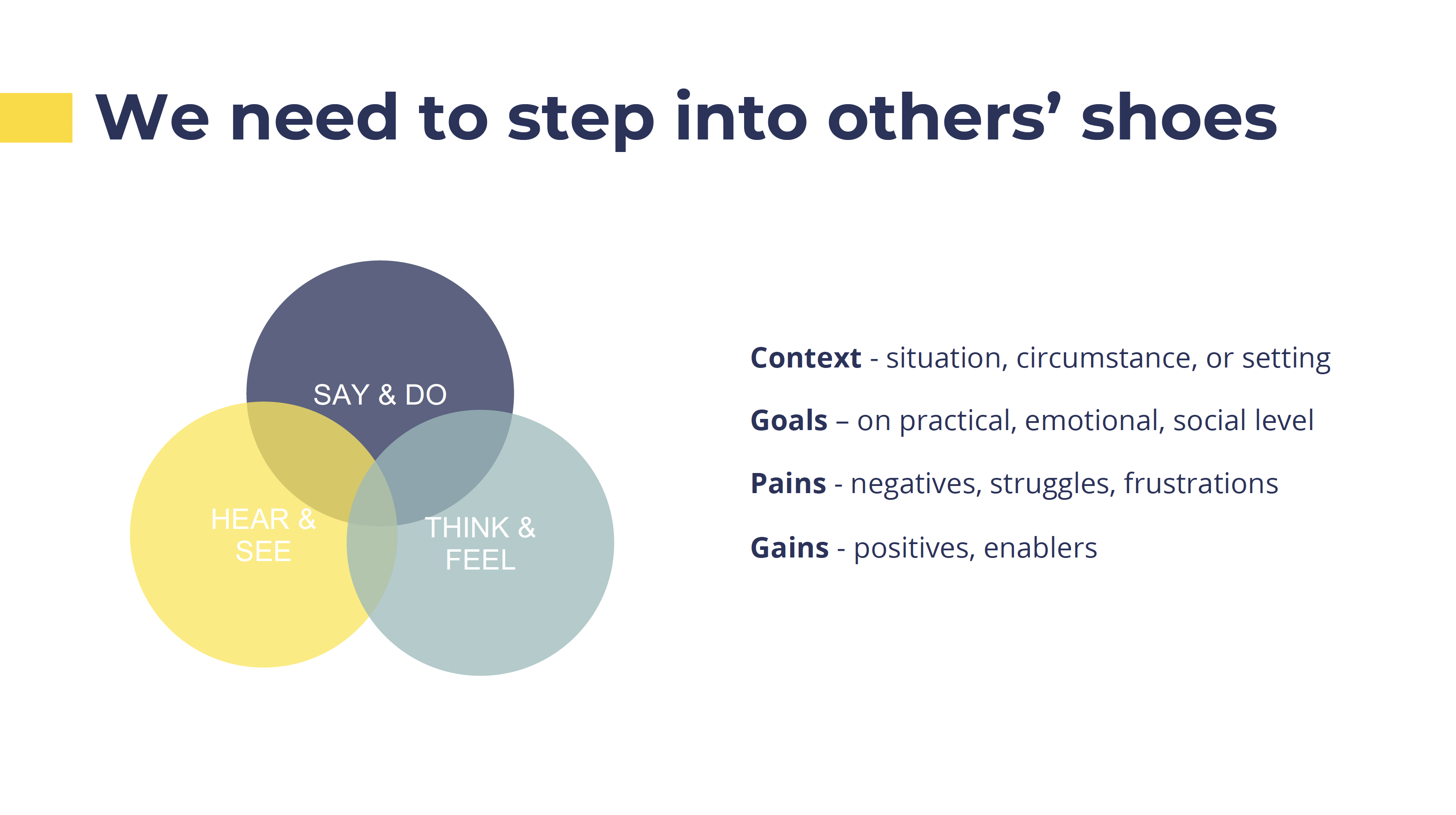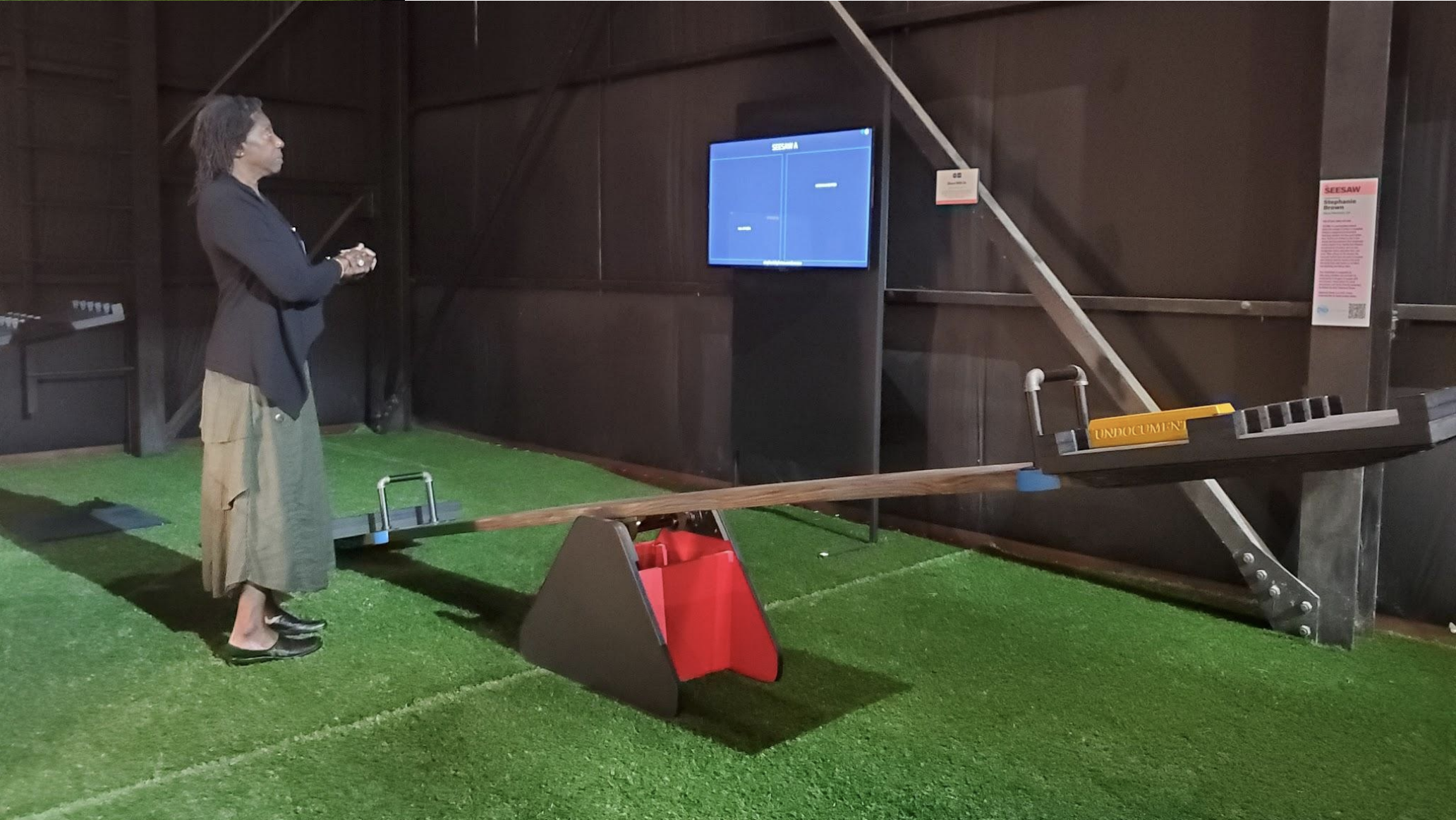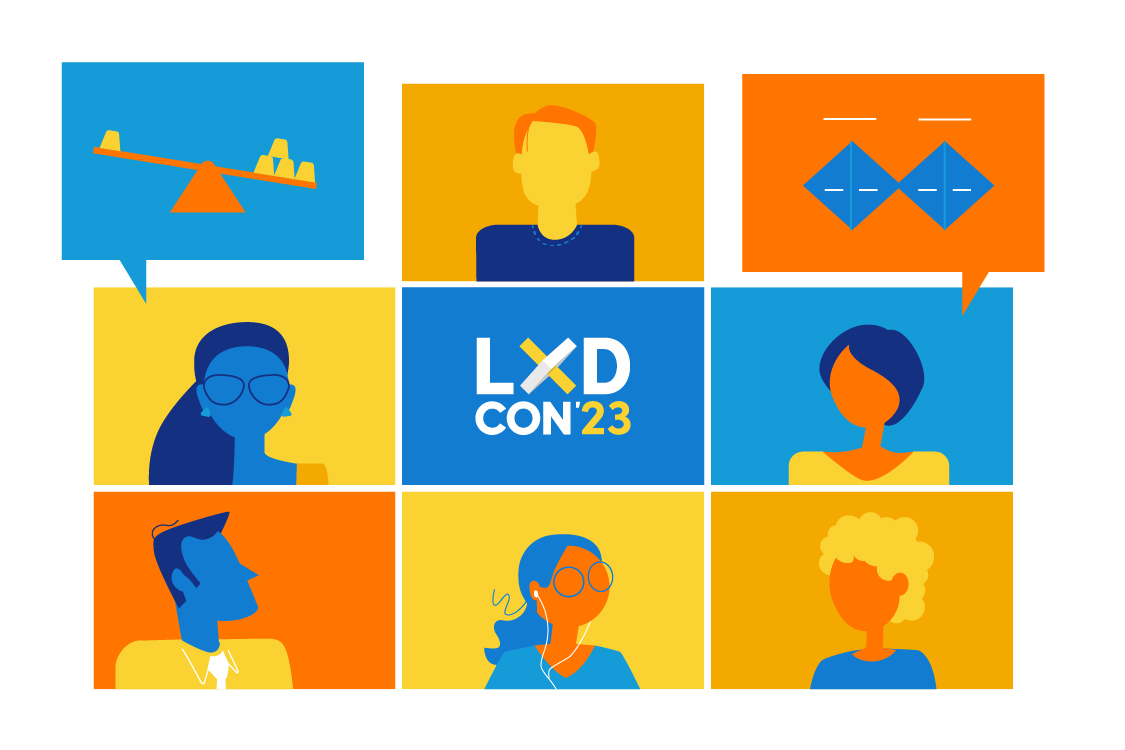July 3 2023 – Niels Floor |
The most frequently asked question about learning experience design (LXD) is “What is Learning experience design?” Once you know the definition of LXD, many wonder how learning experience design is different. LXDCON’23 has the answer!
Figuring out how LXD is different depends on which field you compare LXD to. You can either look at the field of learning or the field of design. This year’s conference clearly displays how LXD is rooted in the field of design. Most sessions were inspired by design disciplines like user experience design, interaction design, game design and experience design.
The importance of design research
Design researcher Maaike Mintjes underlined the importance of design research in her talk and workshop. Design research is a vital part of the design process for user experience designers and learning experience designers alike. It opens your eyes to what people need, highlights opportunities and provides direction. Simply put, without conducting design research the design process is aimless.
Research in the field of learning is typically concerned with listing learning objectives, describing the learner, and identifying a knowledge, skill, or performance gap. The goal is to determine which content can fill these gaps and enable the learner to reach the listed learning objectives effectively. This analytical approach is focused on understanding what people need as learners.
“Design research opens your eyes to what people need, highlights opportunities and provides direction.”
Maaike Mintjes
Design research uses a different approach that is more empathic and creative. By incorporating personal and contextual aspects into its research, designers try to walk in the shoes of the people they design for. The goal is to support the design process towards creating an original and unique solution that works well in a real-world situation. This includes a mix of methods that rely heavily on qualitative research like interviews, shadowing, contextual observation, workshops, and usability testing.

Conducting design research takes place throughout the design process. Your research evolves along with your design. With every sketch you make and prototype you test you gain new insights as you progress towards the final design. This iterative approach is characteristic for human centered design and for how learning experience design is different from learning disciplines.
The art of (learning experience) design
There is a strong tie between art and design. Design can be regarded as an applied form of art. Looking at the arts is a great source of inspiration for LXD, especially when both worlds come together. This is the case in the prolific work of artist Stephanie Fleming. She shared several examples of artwork that make you think differently about societal themes like inequality, racism, and equity.
“As an exhibiting artist, I have learned to utilize LXD in the development of my artworks.”
Stephanie Fleming
Interactive art is ideal for providing a personal and profound experience. Being trained as an interaction designer myself, I’ve always been a fan of creating and experiencing interactive installations. Stephanie fuses art, interaction design, experience design into a beautiful blend of LXD. Her work provides museum visitors with thought provoking memorable learning experiences. She states “My personal objective is to create human centered experiential art installations that leave a profound impact on the participant … Something that you remember, makes you think or reflect. Something that provokes friction and challenges or affirms existing perceptions.”

In her most recent art installation called SEESAW the objective is “For people to physically bare witness to the impact identity in relationship to how justice in America is presented and perceived with the intent that the comparison encourages empathy, understanding, and motivation to consider change.”
This experience appears to be far removed from what you might expect for a learning experience in school or corporate learning. It’s not the type of work you’d see presented at a learning and development conference. At LXDCON, this is exactly the type of work we want to show as it represents fundamental qualities give LXD it’s unique character. LXD embraces a holistic and creative approach to learning and the learner. Transformative experiences can take place anywhere and have endless shapes and sizes. Any LX designer should strive to use their design skills to create work with a profound impact that challenges perceptions and expectations.
These two contributions to LXDCON’23 demonstrate how learning experience design is different. LXD isn’t a learning discipline by origin. It’s a design discipline that’s crossed over into the field of learning bringing the creative and innovative qualities that designers are known for. While Maaike and Stephanie come from different places, they both use their design skills to create impactful work. These are two examples of the way designers make a difference in shaping the way we learn.
Watch the contributions of Maaike, Stephanie and all other amazing experts by ordering the rewatch of LXDCON’23. Relive four days of engaging LXD activities for only €50.




Comments
Hi Gustavo,
Let me respond to your comment. Comparing LXD to instructional design happens a lot, especially by instructional designers. It makes sense to compare something to what you already know. But here’s the catch. The same can be said for other disciplines. For example, experience designers see LXD as a form of experience design. User experience designers see LXD as UXD for learners. Service designers see learning as a service. And so on. They all have a point but no one is totally right.
LXD isn’t defined by one discipline. It’s an interdisciplinary field that incorporates elements design disciplines like interaction design, user experience design, experience design, visual design and game design combined with learning disciplines like cognitive psychology, neuro science, experiential learning, instructional design, teaching and training. This mix of disciplines is fundamentally different from instructional design. That’s what I’ve seen time and again with the many instructional designers that I train. They are surprised how different and challenging LXD is for them. Maybe it’s not new for you, it is for them.
I’ve learned that LXD and ID are two different approaches to solve similar problems. You might say, wait a minute, I design learning experiences as well, what’s the difference? Teachers, trainers, coaches, instructional designers, learning experience designer, serious game designers, documentary makes many others create learning experiences in their own way. On the surface it sounds similar, but when you dig deeper, it’s easy to spot the differences.
Not all instructional designers are the same. You’ve clearly expanded your skillset beyond ID which is great. But I’m going to have to disagree that LXD is nothing new. As a pioneer in the field who has travelled the world to train and work with all sorts of creative professionals and learning professionals it’s clear to me that LXD had something to offer that is unique.
I have always called myself a learning experience designer, even though my degree is in “instructional design”. What I do for a living is design engaging and meaningful learning experiences. I have used visual design and pedagogy to create these learning experiences. The hype on learning experience design as a “new” discipline different from instructional design is unreal.